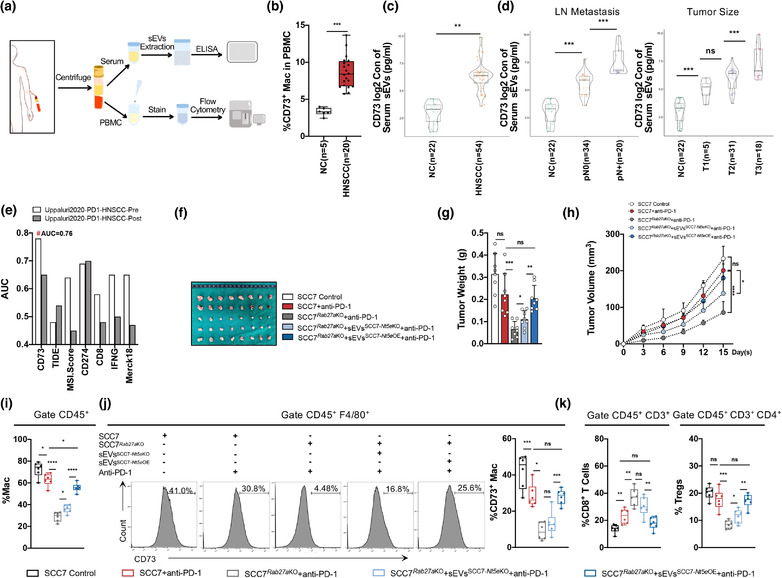FIGURE 6.

The sEVsCD73 predicts HNSCC metastasis and targeting sEVsCD73 abolishes immunotherapy resistance. (a) Schematic of the circulating sEVs from HNSCC patients processing. (b) Percentage of CD73+ macrophages in PBMC. (c) The concentration of CD73 in serum sEVs (log2 TPM) detected by ELISA from HNSCC patients. (d) Level of CD73 (log2 TPM) on serum sEVs predicts higher risk of lymph node metastasis and larger tumour size. (e) CD73 indicated as a potential candidate to predict anti‐PD‐1 therapy response for HNSCC patients compared to other existed biomarkers, analysis by TIDE framework (http://tide.dfci.harvard.edu), TIDE, tumour immune dysfunction and exclusion. (f) The exhibition of isolated tumours 15 days after injection of SCC7 or SCC7 Rab27a KO cells with or without CD73 absent in sEVs combined with anti‐PD‐1 therapy. (g and h) The tumour weight and tumour growth curve of SCC7 control or SCC7 Rab27a KO with indicated treatment combined with anti‐PD‐1 therapy. (j) Flow cytometry analysis for infiltration of macrophages and percentage of CD73+ macrophages in tumours. (k) Flow cytometry analysis for infiltration of CD8+ T cells and Tregs in tumours. Data were analyzed by Mann–Whitney test (ns, no significant difference, *: p < 0.05, **: p < 0.01, ***: p < 0.001, ****: p < 0.0001)
